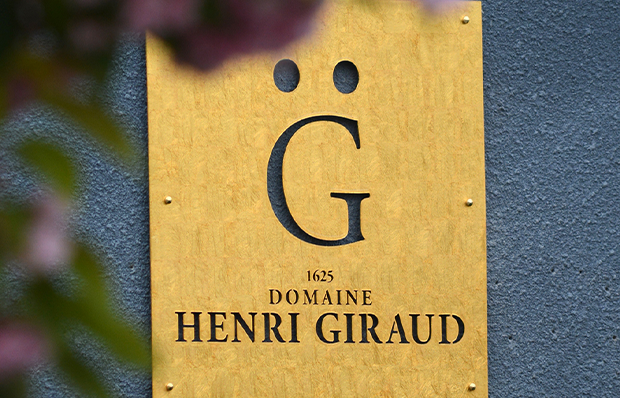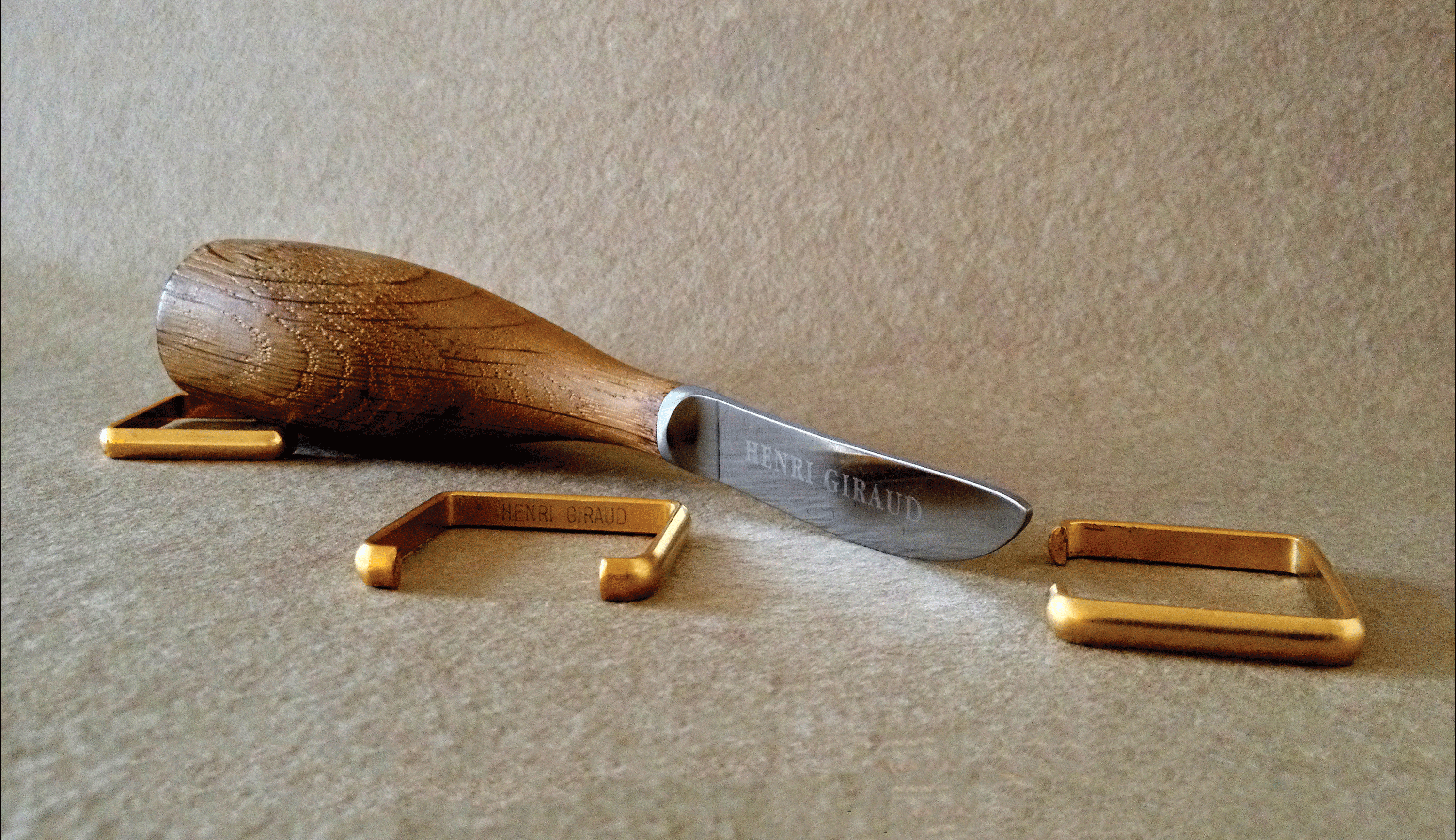
The line between madness and genius can be a fine one. Visionaries and their ventures dare to tread this line, where judgement of their steps and missteps may only be measured by success or in hindsight.
In Champagne, steeped in history, tradition and the binding rules of the appellation, and where annual production at a single house may be in the millions of bottles, this balancing act is more precarious still. Yet genius persists, and perhaps nowhere more so than at Henri Giraud.
Innovation is grounded in the Giraud family roots though. Broadly speaking, these core tenets may be characterized by three central pillars: Aÿ, oak and Pinot Noir.
Reims may be the modern hub upon which champagne spins, but the village of Aÿ is the ancient capital. It was here that the Hemart family settled at the beginning of the 17th century, putting down roots both literal and figurative. In Aÿ they remained until a veteran of the Battle of the Marne, one Léon Giraud, married a Hemart daughter. Battered by phylloxera and war, the family’s vineyards were restored, fully deserving of the Grand Cru classification that Aÿ commands.
The house, winemaking facilities and primary vineyards are found in Aÿ still. Take a stroll through the grounds, though, and the nod to modernity is striking. Art is everywhere, with a large oak tree made entirely of paper being particularly beloved. Don’t mind the periscope hanging from the ceiling – it doesn’t actually do anything anymore, but it does look very cool.
There are barrel halls, of course, but also colourful eggs made from concrete and clay. Several metres beneath the ground is one of the house’s greatest treasures, the perpetual reserve, passively cooled by its depth and proximity to the Marne river.
Rarely for a modern champagne house, oak remains the primary vessel for fermentation and maturation, lending the Giraud wines weight, structure and power. Current scion, Claude Giraud, took this traditional method to a new level in a way that was firmly rooted in history.
The nearby Argonne forest had long been neglected as a resource for cooperages. Giraud restarted the use of Argonne oak for winemaking, in the process also implementing an enormous replanting and revitalizing program. Oaks from specific parts of the forest were tracked for common attributes and influences they would have on wine.
Understanding has built to the level that Giraud now identify unofficial ‘oak appellations’ within the forest, matching them to specific vineyard plots and vintages. In the very best years, they produce their prestige cuvée using oak exclusively from this forest, appropriately and simply naming it ‘Argonne.’
Giraud vinify all three major varieties, and indeed make fantastic Chardonnay, both still and sparkling, but Pinot Noir is the beating heart of both the Marne Valley and the house. The love affair is a natural one from the terroir, but also perfectly suits the demands of oak and thus finds itself the central part of most blends. The result is champagne of spectacular complexity, and often tremendous ageing potential.
In addition to these renowned sparkling wines, Giraud also produce still wines from both Pinot Noir and Chardonnay – another nod to the region’s history, but also an acknowledgement of the reality of warming temperatures. Ratafia is also made at Giraud; a sweet liqueur made from a blend of grape juice and eau-de-vie that is as delicious as it can be hard to find.
After Robert Parker famously blew the lid off the secret that Giraud had been, the house is no longer technically a ‘Grower champagne’. Production, however, remains very small at 250,000 bottles a year. In France itself, they can often only be found in fine dining establishments, where at all. We are thus excited to be able to offer these wines in New Zealand, and have just landed several new cuvées that further tell the story of Giraud and their ceaseless efforts to produce some of the world’s finest wines.


 LOCATION
LOCATION

 90/100
90/100
Organics have become all the rage in wine these last few years, and for many good reasons. Not all wine regions are created equally though, and practicing organics in a warm, dry area is naturally easier and more forgiving than somewhere prone to rain or cooler temperatures.
Champagne as a region falls much more into the latter category, with grape growing historically tending towards the verge of viability. As a result, organic champagnes tend to be few and far between. Flexibility and at least the option to spray to ward off pressure from disease and mildew is an important part of being able to produce wine at all in tough years.
Yet the potential benefits of organics persist. At Henri Giraud the house motto, ingrained in their practices and painted across winery walls reads, “Preclude nothing, be bound by nothing, make good wine naturally.”
The nod to flexibility in viticultural practices is clear, but their talented team seldom need it. Giraud have, in fact, worked without pesticides or weedkillers for over 30 years. They use synthesized products to protect against mildew, which are non-chemical in nature but technically against the rules of certified organics
From their motto and the house spirit it represents comes the Esprit de Giraud, a brilliant Pinot Noir-based cuvée that is the first champagne to be certified as having zero herbicide or insecticide residue, after two years of exhaustive testing conducted by an independent laboratory.

Sweet, fortified wine from Champagne? What fresh blasphemy is this, you say?
Well, in truth, the practice of making Ratafia goes back centuries. However, if it’s not something you’re familiar with don’t feel too ashamed, because it was only in 2015 that the designation and style achieved officially recognized status.
Ever a force for the modern embracing the traditional, Champagne Henri Giraud were very much at the forefront of that movement, with Claude Giraud the president of Boissons Spiritueuses Champenoises - an association of the growers, distillers and producers in Champagne - at the time.
All that is well and good, of course, but what is it? Ratafia is made by taking grape juice from the third and fourth pressings and fortifying it with a grape-derived brandy, usually ending up at an ABV of around 18%.
The result is sweet, spicy and often quite nutty, with flavours of marzipan and ripe, stewed fruits. Delicious on ice after a meal, with a cheese board or dessert, or served cold as an aperitif.


When so much of the appeal of fine wine is its theatre and history, why not go for a champagne that requires a specialized tool to open it?
If you’ve ever wondered what the proper term is for the cage that encloses the cork on a champagne bottle, or if you’re just a Scrabble enthusiast on the lookout for new words, Glengarry has you covered. It’s called a muselet, from the French word for muzzle. You learn something new every day, right?
Whilst these muselets are the norm for champagne enclosures and exist for very good reason (nobody wants their precious bottles deciding to open themselves as a result of pressure), they are not the only way to make sure that corks stay where they’re meant to.
Historically, the earliest versions of this technology involved the use of hemp string to secure the cork, a laborious process that remained risky for storage. The first muselets as we might recognize them today came into use around 1880. Between these methods of enclosure, however, there was the agrafe.
An agrafe is essentially a large metal clip or staple that is inserted over the cork and secured against the bottle. These are in use at some champagne houses, and for the odd French cider. The solution is an effective one that fell out of favour for a simple reason: the staples must be tight enough that they can’t be loosened by hand, and thus a tool is required.
In a pinch, a knife, spoon, slim screwdriver or any means of firm leverage will do, but the correct and traditional tool is the dégrafeur. It is, naturally, far more stylish than using a spoon, but not likely to be something found in every household’s cutlery drawer.
Henri Giraud retain the use of the agrafe for their Argonne and Fût de Chêne champagnes, and rather usefully package a dégrafeur with every bottle. If that wasn’t helpful enough, these are the Rolls Royces of dégrafeurs. They come in two versions: one is an elegantly curved metal blade that is plated in gold (or rose gold if you’re lucky enough to have your hands on a bottle of the Argonne rosé), the other features a handle crafted from the stave of an Argonne oak barrel and ends in a metal tool.